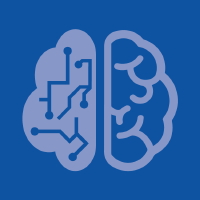Topic Menu
► Topic MenuTopic Editors


Big Data Intelligence: Methodologies and Applications
Topic Information
Dear Colleagues,
In the big data era, with the enrichment of data collection and description measures, a wide array of data in various formats are collected much easier than before. It is significant to discover the knowledge hidden in the mass by comprehensive understanding and learning to realize the data intelligence, which can help human in various dimensions, such as intelligent decisions and predictive services. However, the high-dimensional, heterogeneous, real-time, and low-quality characteristics of the collected data pose great challenges to the design of knowledge discovery methods. If we can effectively perform feature learning on massive high-dimensional, heterogeneous, real-time, and low-quality big data to discover the hidden knowledge and rules, the potential values and insights can be identified. Thus, it will provide a comprehensive understanding and a favorable decision-making framework based on the massive data to realize the real big data intelligence.
This topic aims to seek the high-quality papers from academics and industry-related researchers in the areas of big data, data mining, machine learning, artificial intelligence, and multimedia analysis to present the most recently advanced methods and applications for realizing big data intelligence. Proposed submissions should be original, unpublished, and novel for in-depth research. Topics include but not limited to:
- Big Data Theory and Methods;
- Artificial Intelligence Theory and Methods;
- Multimodal Data Analysis;
- Domain Adaption and Transfer Learning;
- Deep Learning and Reinforcement Learning;
- Knowledge Graphs;
- Natural Language Processing;
- Cross-modal Index;
- Uncertainty Data Analysis;
- Data Reliability Analysis;
- Medical Big Data Analysis and Application;
- Industrial Big Data Analysis and Application;
- Big data Analysis and Application in Other Fields.
Prof. Dr. Liang Zhao
Dr. Liang Zou
Dr. Boxiang Dong
Topic Editors
Keywords
- big data
- artificial intelligence
- multimodal learning
- knowledge graphs
- data reliability
Participating Journals
| Journal Name | Impact Factor | CiteScore | Launched Year | First Decision (median) | APC |
|---|---|---|---|---|---|

Big Data and Cognitive Computing
|
3.7 | 7.1 | 2017 | 25.3 Days | CHF 1800 |

Data
|
2.2 | 4.3 | 2016 | 26.8 Days | CHF 1600 |

Machine Learning and Knowledge Extraction
|
4.0 | 6.3 | 2019 | 20.8 Days | CHF 1800 |

Mathematics
|
2.3 | 4.0 | 2013 | 18.3 Days | CHF 2600 |

MDPI Topics is cooperating with Preprints.org and has built a direct connection between MDPI journals and Preprints.org. Authors are encouraged to enjoy the benefits by posting a preprint at Preprints.org prior to publication:
- Immediately share your ideas ahead of publication and establish your research priority;
- Protect your idea from being stolen with this time-stamped preprint article;
- Enhance the exposure and impact of your research;
- Receive feedback from your peers in advance;
- Have it indexed in Web of Science (Preprint Citation Index), Google Scholar, Crossref, SHARE, PrePubMed, Scilit and Europe PMC.


